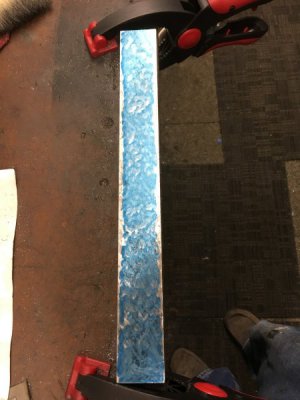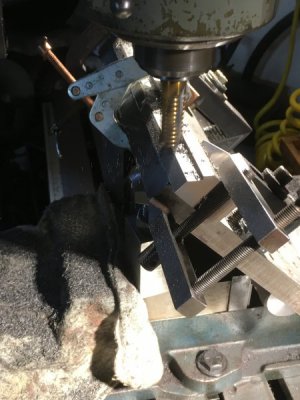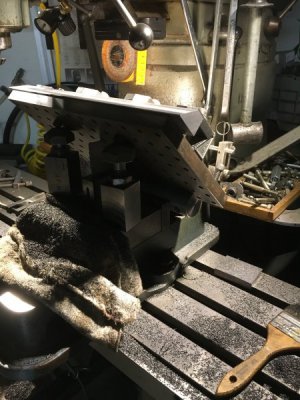So I have a chunk of cast iron I'm turning into a dovetail straight edge. Piece is 13" long 2" wide and just short of a 1" thick. I've ruff machined to those dimensions and scraped in the bottom surface flat. Now I need to cut the 45* angle. I set up a angle plate on the Bridgeport have it trammed in along with the piece. My question is what tool would induce the least amount of stress on the part slitting saw, or just common endmill? I have clearance for a slitting saw and thought that might be the way to go and the quickest and cleanest. Machining to ruff dimensions was a dream bandsaw went through it like butter no hard spots at all,and when machining it was throwing nice curl chips minimum dust. I was very surprise some of my past cast iron experiences had been disappointing this stuff acts like aluminum when machining. The part hasn't moved any and I don't want to induce any more stress than I have to so what do you all think would me the best method to cut this 45* on this bar a slitting saw or endmill ?I don't have a shaper as a option either so don't remind me please. Here's a pic of the bar in question.





